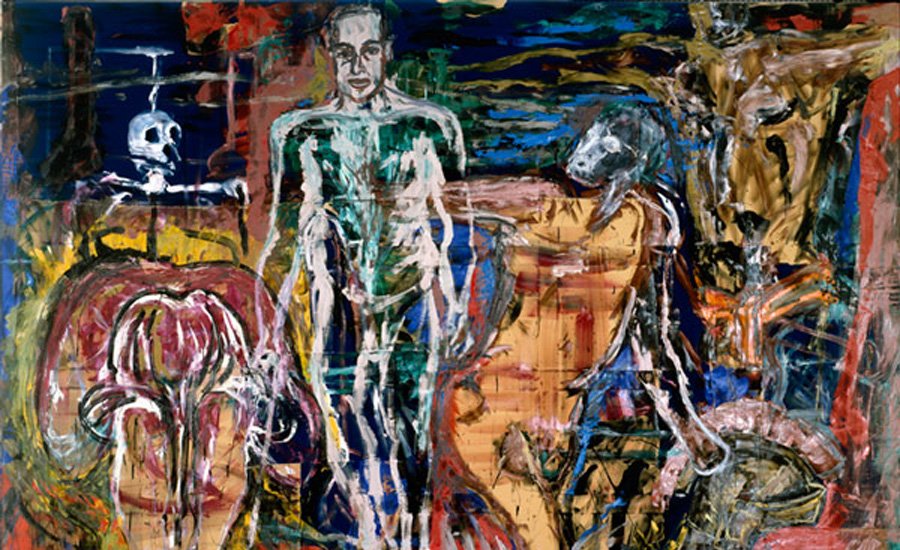Neo-Expressionism, the last of the truly famous movements to sweep the art world, arose in the late 1970s as a reaction against the austere, cerebral cool of Minimalism and Conceptual art, combining richly applied paint and attention-grabbing artistic gestures in an attempt to revive the hotter heroics of painters like van Gogh and the Abstract Expressionists.
First developing in Europe, where artists like Anselm Kiefer and Georg Baselitz were adding a new gloss of WWII generational guilt to early-20th-century German Expressionism and Italy's so-called Transavantguardia, painters like Francesco Clemente and Sandro Chia were creating enigmatic, mystical canvases, the movement really coalesced in New York in the 1980s. There, in high-powered galleries like Leo Castelli and, especially, Mary Boone, the artists Julian Schnabel, David Salle, Elizabeth Murray, Eric Fischl, and others created a cultural sensation with outsize, often-figural paintings that embraced the messy, the raw, and the psychologically-fraught. (The outsize claims of the artists helped too, with Schnabel telling the press that "I'm the closest you'll come to Picasso in this lifetime.")
Some critics point to Neo-Expressionism, which lost steam in the economic downturn of the early 1990s, as the last chapter in New York's reign as the world's art capital. But the artists at the heart of the movement continue to evolve today—with Schnabel also pursuing an increasingly successful filmmaking career on the side—and their work is due for a major critical reconsideration and market comeback. (The 40-year cycle of an art movement's emergence, subsidence, and then rediscovery and celebration rarely skips a beat.) Meanwhile, a younger generation of artists has come up showing the influence of the Neo-Expressionists. Explore this collection to learn more about the artists involved in the original movement and a few of their aesthetic followers.
Meet the Neo-Expressionists



























